
UNStudio has released details of Project H1, a self-described “10-minute city” masterplan for Seoul, South Korea. Built on an existing industrial site and railway area, the 5.4 million square foot (504,000 square meter) neighborhood saw a collaboration between UNStudio a the firm’s research wing UNSense to create a plan which prioritizes real-time digital urban systems.
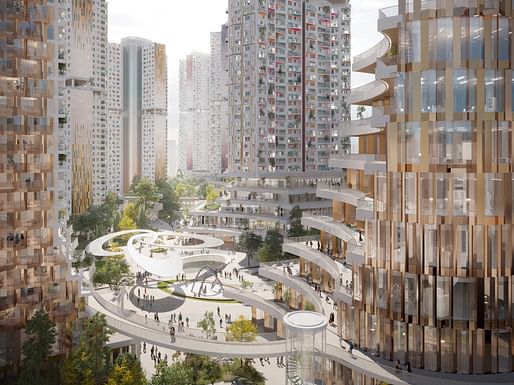
The studio describes this combination of a physical urban plan and an added technology layer as “a fully digitally serviced neighborhood to enhance the daily lives of the residents and free up time for leisure activities." The digital infrastructure will also be used to manage energy production and consumption, as well as communal spaces cultivated for local food production.
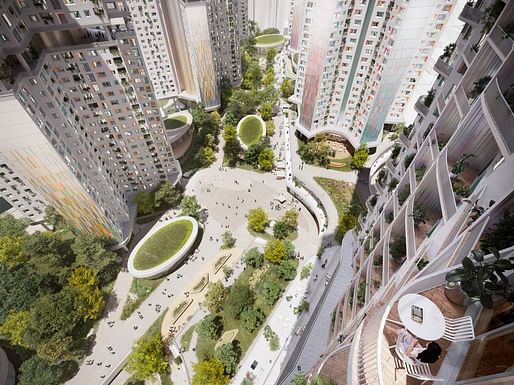
“For the H1 masterplan we have aimed to create the ultimate contemporary 10-minute city, where the daily life experience of the residents is the top priority,” explained UNStudio founder Ben van Berkel in a statement. “We do this through the inclusion of a rich density of uplifting, curated on-site experiences that provide an extensive range of options for how they can spend their living, working and leisure time, thereby also saving them the time needed to travel elsewhere in the city - because with time that is saved, more time is created.”
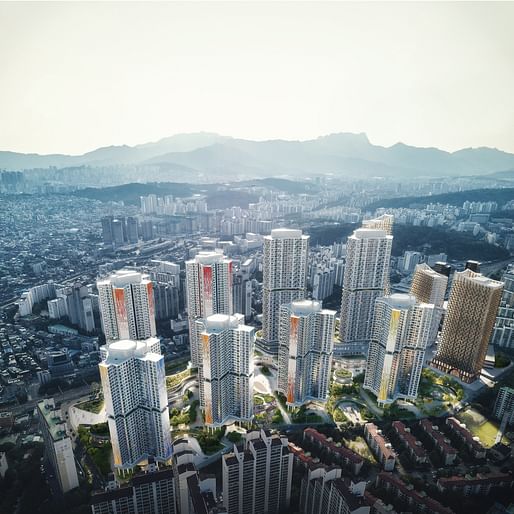
The form of the masterplan was inspired by the topography of nearby mountains, resulting in continuous green spaces weaving through tall sweeping forms. The site is divided into two main zones, the larger of which houses a mixed-use plot of 8 residential towers. The towers stand on what the design team refers to as Stepping Stones: street-level leisure spaces for commercial, educational, and cultural uses. Running through the plot, a retail-based street mall houses cinemas, a community center, and a kindergarten.

The apartments above are based on a Radial typology, with variations in size for multiple family or tenant configurations. The apartments are also designed with flexible furniture, including a ‘Living Wall’ system that enables different spatial configurations while housing various smart functions and gadgets. In an effort to reduce urban loneliness and isolation in high-rises, the towers incorporate shared spaces and joint facilities on each floor, as well as multi-purpose community spaces on the entrance level of each apartment tower, where residents can create their own unique shared programs.
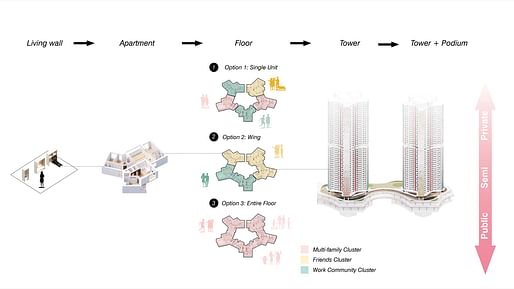
The design places an emphasis on outdoor living, with key landscaped elements comprising cultivated gardens, parks, and themed green roofs, and less cultivated landscapes and nature zones. This emphasis on “productive landscapes” also extends to elements focusing on fitness, food, and clean energy, such as climbing walls, public running tracks, hydroponics, and urban farming.
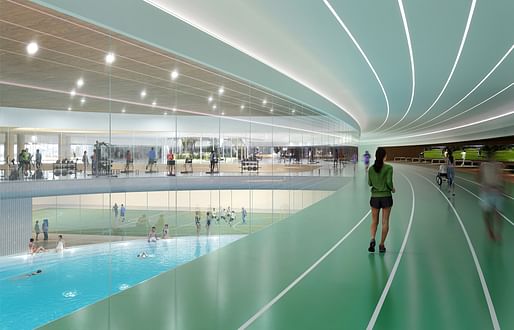
Responding to Seoul’s reputation for sudden heavy rainfall, most horizontal surfaces in the masterplan are covered in a thick layer of soil that captures the rainwater and feeds it into a water filtration system for storage and irrigation. Meanwhile, basement-level waste collectors collect organic waste to develop compost for urban farming.
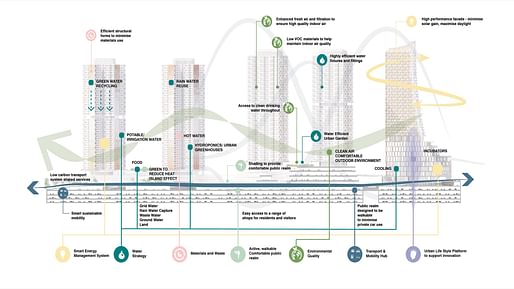
The scheme is one of several major commissions unveiled by UNStudio in recent months. In July, the firm was selected as the winning competition entrant for both the Sochi Waterfront in Russia and the Chungnam Art Museum in South Korea. Also in July, the firm joined BIG in investing in the virtual co-working platform SpaceForm, while in May, the firm unveiled designs for an arts and conference center in Eindhoven topped by a cantilevering auditorium.
No Comments
Block this user
Are you sure you want to block this user and hide all related comments throughout the site?
Archinect
This is your first comment on Archinect. Your comment will be visible once approved.